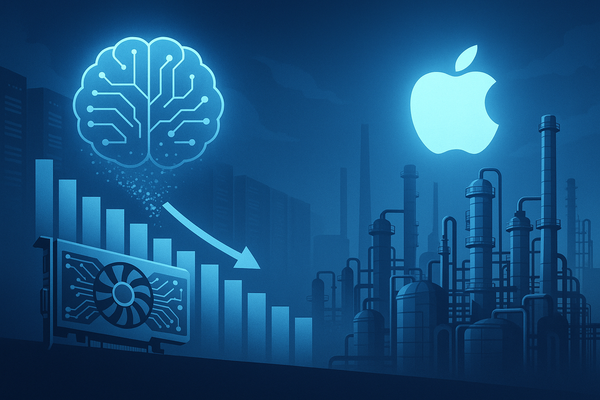The Next Leg of the Greatest Bull Market in History

August played out almost exactly as projected. The S&P 500 rose 1.9% for the month, versus the model’s forecast of +1.5%. The Dow climbed 3.2% as UnitedHealth reversed course and rebounded. The Russell 2000 outperformed as breadth returned to the market, just as anticipated. It was a grinder of a month, with modest gains masking underlying shifts.
Accuracy matters in forecasting, and it’s worth noting that these moves lined up squarely with prior predictions. The model has been on target across equities, sector leadership, and the ebb and flow of sentiment. That foundation gives us confidence in what comes next: a brief pause in September followed by the most powerful bull market in modern history.
September: A Short-Term Pullback Before the Party
After four strong months, September is projected to be the first down month in the sequence. The S&P 500 is expected to lose about 1.5%, with volatility carrying through to mid-October. Traders can lighten up, take gains, and prepare for choppier waters. For long-term investors, however, the advice is simple: average down.
Because what begins in mid-October is not a correction, but the ignition of a new phase of market history.
The Coming Surge: 200–300% Upside Before the Bubble Pops
From mid-October forward, markets are set to enter a 2.5-year expansion that could carry the S&P 500 and broader benchmarks up 200% to 300%. This move will culminate in late 2028 or early 2029 with a 1929-style collapse. But by then, markets will have tripled from current levels, creating enormous wealth before the inevitable unwinding.
The macro environment will provide the backdrop. The Federal Reserve is expected to cut rates aggressively, taking the policy rate down to roughly 1.5% at the cycle’s low. Long bonds will remain contained in a 3.5%–4.5% range, creating stability in credit markets. Inflation, far from being a threat, will trend downward to around 1% as a massive productivity boom reshapes the economy.
This is the classic setup for speculative excess: falling short-term rates, disinflation, and productivity-driven optimism. But unlike past cycles, this one will be supercharged by a new kind of financial fuel.
The Liquid Fuel: Balance Sheet and Income Statement Transformation
The Tesla Coupon Token framework, outlined in detail in our earlier article, is more than a thought experiment. It represents the direction corporate finance is heading. By issuing tokenized dividends and coupon rights, corporations can create new balance-sheet assets, recycle token value indefinitely, and report book value enhancements that would have been impossible under old accounting standards.
Thanks to the Clarity Act and the FASB’s updated rules, tokens can now be carried at market value as cash equivalents. For companies with large consumer bases, this transforms shareholder dividends into tradable, monetizable digital assets. The income statement benefits from recycled tokens, transaction fees, and cross-selling of higher-margin products.
Once adopted broadly, this model becomes the liquid fuel of the bull market—artificially inflating earnings, book value, and stock prices to new but ultimately unsustainable heights.
The Global Backdrop: U.S. Pulling Away
While corporate America leverages tokenization, the global backdrop will reinforce U.S. leadership. The United States is pulling further ahead economically as China’s economy continues to sink. Tariffs, once feared as market killers, will be absorbed by global corporations that cannot afford to lose access to the U.S. consumer, the undisputed superstar of global consumption.
At the same time, Agentic AI is emerging as the defining theme of this cycle. From healthcare breakthroughs to energy optimization to consumer goods innovation, AI is weaving itself into every corner of the economy. Robots, drones, and automation of all kinds will redefine productivity, reduce costs, and open new markets. The United States, already the global leader in AI, will see its advantage widen as these technologies scale.
Crypto, Tariffs, and AI: The Three Catalysts for the Greatest Bull Market
Three forces converge to create the conditions for the greatest bull market in history:
- Crypto and Tokenization: Corporate adoption of blockchain-based financial structures enhances earnings and shareholder value.
- Tariffs: The rest of the world absorbs the cost to keep U.S. consumers, reinforcing America’s economic dominance.
- Agentic AI: Productivity surges as AI, robotics, and automation transform healthcare, energy, and consumer markets.
Together, these catalysts ignite not just a market rally, but a historic cycle of wealth creation.
The Party Is On
The model has been right on the direction of markets, and now it points to the most consequential opportunity of our time. September will bring a brief downturn, but by mid-October, the next phase begins. With Fed policy turning accommodative, productivity soaring, tokenization transforming corporate finance, and the U.S. extending its lead globally, the setup is unparalleled.
The rally that follows will carry markets up 200–300% over 2.5 years before an eventual collapse. But between now and then, investors will witness the ascension phase of the greatest bull market in history. Traders may take a breath, but for everyone else: average down. The party is about to kick into high gear.





